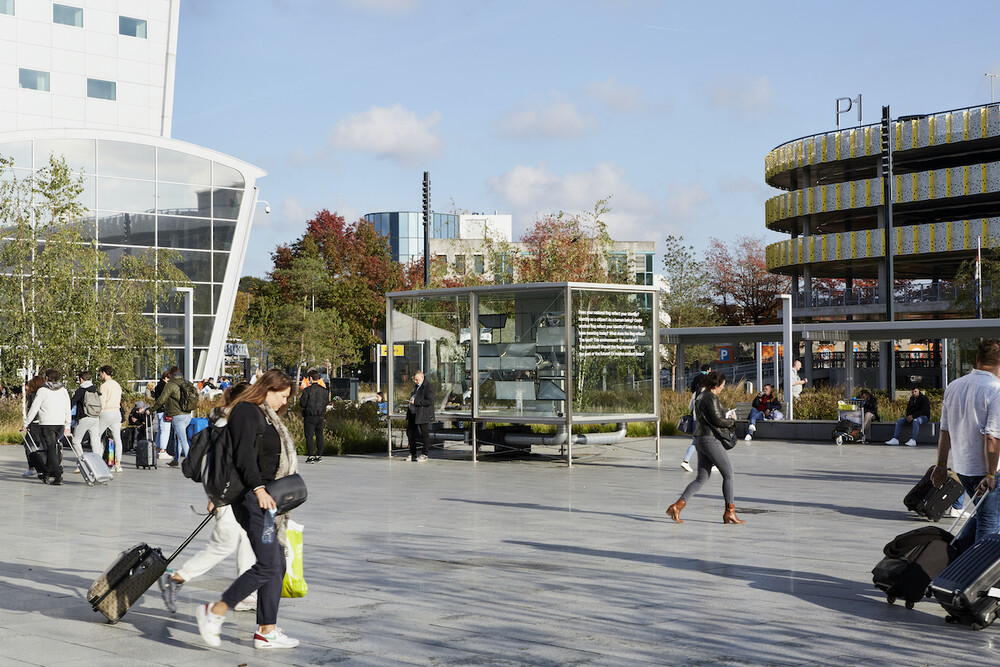
Working Through Conditions/Conditioning
In ‘Working Through Conditions/Conditioning’, second-year students of the Social Design at DAE's Master programme explored the legacy of the Dutch de STIJL art movement through a series of installations, workshops, gatherings and lectures. The Master department collaborated with the Van Abbemuseum at Eindhoven Airport.

This multifaceted intervention, culminating in three installations in front of Eindhoven Airport during Dutch Design Week 2021 until 1 April 2022, examined how the art movement has shaped ideas of citizenship through major institutions and through architecture.
Organised into three collectives – Hokjesdenkers, Percolate Collective, and re_move – students engaged with reconstructions of artworks by de Stijl founder Theo van Doesburg from the museum's collection, as well as elements of the airport's design.
Through this project, students sought answers to two core questions: de STIJL is a Dutch aesthetic 'lingua franca' that helped shape the formation of Dutch design, but to what extent does it also reproduce and feed into the parameters of Dutch citizenship and identity? Often museums, airports and design academies borrow each other's design typologies, but in what ways do they work towards the same narrative around heritage?
"This joint project between Van Abbemuseum, Eindhoven Airport, and DAE highlights the importance of collective thinking for the future of cities and their public infrastructures," said Marina Otero Verzier, head of Social Design at DAE. "Working collaboratively across disciplines, institutions, and generations to reflect on how we live and the values we live by, and propose alternatives is at the core of Social Design."
The project is part of an ongoing partnership between the Van Abbemuseum and Eindhoven Airport called Feel The Vibe, which began in 2020.









